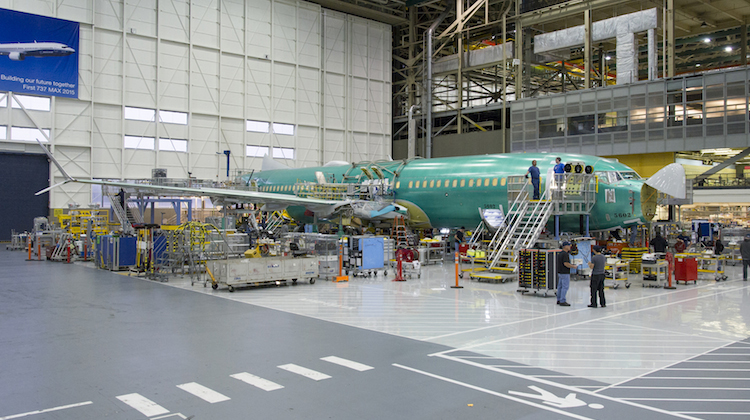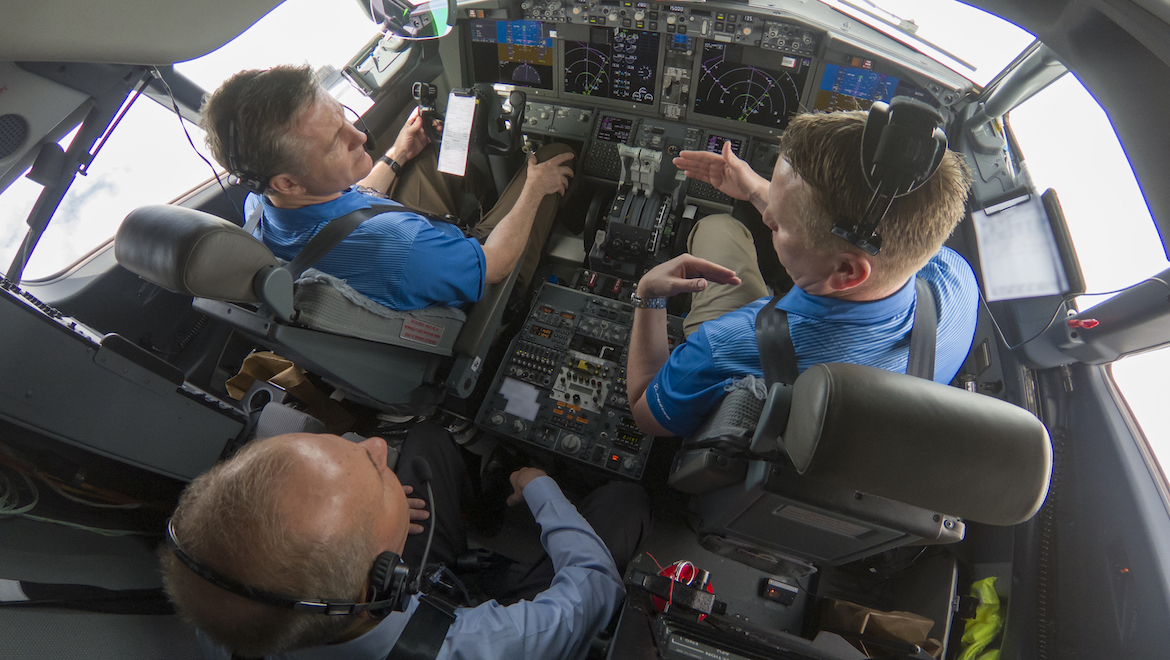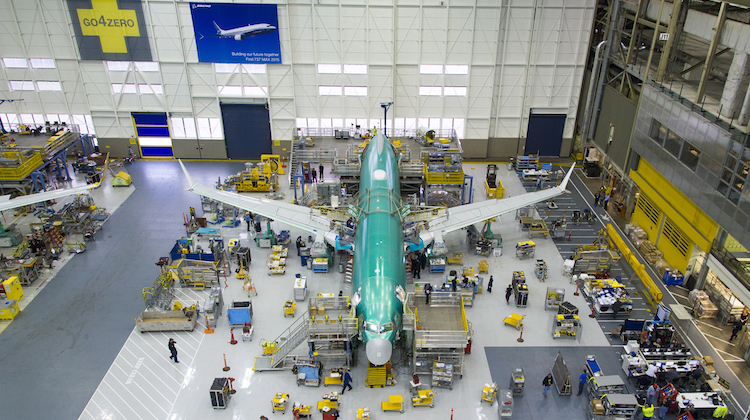
Boeing chief executive Dennis Muilenburg says the company has conducted 96 flights testing the software update to an anti-stall feature on the 737 MAX that has been linked to two fatal accidents in the past six months.
The software update to the Maneuvering Characteristics Augmentation System (MCAS) has been in development since a Lion Air 737 MAX 8 plunged into the Java Sea shortly after it took off from Jakarta in October 2018. All 188 people on board were killed.
In March 2019, an Ethiopian Airlines 737 MAX 8 with 157 passengers on board crashed minutes after it took off from Addis Ababa. There were no survivors.
Boeing has acknowledged the MCAS anti-stall feature was activated in response to erroneous angle of attack information in both the Ethiopian Airlines and Lion Air tragedies, following the publication of the preliminary report into the Ethiopian Airlines accident.
In late March, Boeing held a technical briefing with 200 aviation professionals, including regulators and airline customers of the 737 MAX, to explain the software update.
And since then, the company has also visited the China, Singapore and the United Kingdom for further meetings with pilots and regulators.
Muilenburg, who was on board a test flight in early April, said the software update has functioned “as designed”.
“Overall, our team has made 96 flights totaling a little over 159 hours of air time with the updated software,” Muilenburg said at the George W. Bush Presidential Center Forum on Leadership in Dallas on Thursday (US time), according to a transcript published on the Boeing website.
“They will conduct additional test and production flights in the coming weeks as we continue to demonstrate that we’ve identified and met all certification requirements.
“We look forward to completing near-term milestones on the path to final certification.”

Boeing has explained previously the software update added extra layers of protection from erroneous data out of the aircraft’s angle of attack (AOA) sensors.
This included having the flight control system compare inputs from both AOA sensors. If there was a significant disagreement – by 5.5 degrees or more with the flaps retracted – the MCAS would not activate and an indicator of the flight deck would alert the pilots, according to Boeing.
Further, Boeing said “MCAS can never command more stabilizer input than can be counteracted by the flight crew pulling back on the column”.
“The pilots will continue to always have the ability to override MCAS and manually control the airplane,” Boeing said on its website.
“These updates reduce the crew’s workload in non-normal flight situations and prevent erroneous data from causing MCAS activation.”
In terms of pilot training, Boeing said it had updated the computer-based training to accompany the software update.

The airframe has also paused deliveries and is reducing the production rate of the 737 program to 42 aircraft a month, from 52 aircraft a month previously. The lower production rate was due to occur in mid-April.
Not a lot of parking spaces left…. #737Max #Boeing pic.twitter.com/aXWEhnR1Yl
— Michael Graham (@MikeGrahamLS) April 11, 2019
Muilenburg, who has been at Boeing more than 30 years, described the past few weeks as “the most heart-wrenching” of his career.
“Our values are at the very core of everything we do. Yet, we know we can always be better, and these recent accidents have intensified our commitment to continuous improvement as we design, build and support the safest airplanes in the sky,” Muilenburg said.
VIDEO: Boeing chief executive Dennis Muilenburg’s speech at the Forum on Leadership from the George W. Bush Presidential Center’s YouTube channel.
The May 2019 edition of Australian Aviation magazine will include a feature story on the Boeing 737 MAX.










